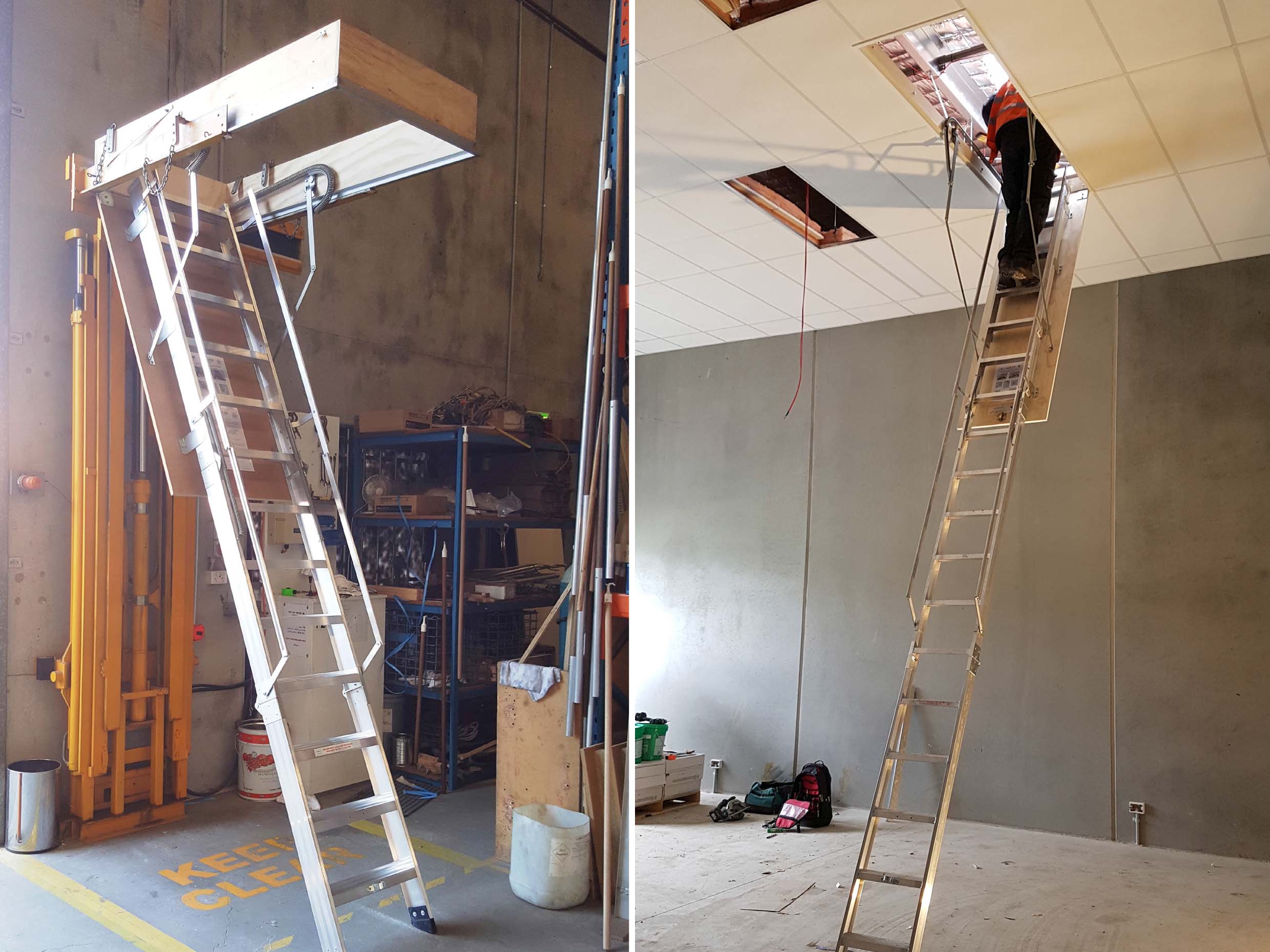Got a dusty, unused attic? Getting up there shouldn’t feel like scaling Mount Everest. The right attic access ladder can transform that forgotten space into valuable storage, a cozy hideaway, or even extra living space. This guide helps you navigate the world of attic ladders, from choosing the perfect type to installing it safely and keeping it in top shape. Let’s make accessing your attic safe, easy, and convenient!
Choosing Your Ideal Attic Ladder
Ready to unlock your attic’s potential? Your first step is choosing the right access ladder. This section breaks down everything you need to know to make the best choice for your home, budget, and needs. Escape the summer heat and enjoy a comfortably cool attic with an attic exhaust fan with thermostat, preventing overheating and extending the life of your home’s insulation. For easy access to your newly climate-controlled attic, consider installing convenient attic stair access.
Types of Attic Ladders: Finding the Perfect Fit
Attic access ladders are like secret passages to a world of possibilities. Several types exist, each with its own set of pros and cons.
-
Folding Attic Ladders (Scissor/Concertina): These are the most common type, likely due to their balance of affordability, ease of installation, and decent weight capacity. Scissor ladders fold like an accordion, while concertina ladders have a more compact “Z” fold. They’re typically made of aluminum (lightweight), steel (heavy-duty), or wood (classic but may be less durable).
-
Telescoping Ladders: Tight on space? A telescoping ladder may be your answer. These retract like a telescope, offering ultimate compactness. They’re generally made of lightweight materials, making them easy to handle, but possibly with a lower weight capacity than other types.
-
Sliding Ladders: This style offers a compromise between telescoping and folding ladders. While sturdier than telescoping versions and offering a reasonable weight capacity, they aren’t as compact as folding options. The sections slide into each other for a smooth, solid feel.
-
Fixed Stairs: The gold standard for attic access, fixed stairs provide unparalleled convenience and stability. However, they require significant construction and space, making them impractical for many homes.
-
Electric Attic Lifts: Offering maximum convenience, especially for those with mobility concerns, electric lifts carry you and your belongings up and down effortlessly. These are a premium option with a higher price tag.
Key Considerations for Choosing an Attic Ladder
Before you click “buy,” assess your needs. Precise measurements are essential – measure twice, buy once! Here’s a checklist:
-
Attic Opening Dimensions & Swing Clearance: Measure your attic opening carefully and ensure the chosen ladder fits. Folding ladders require adequate swing clearance.
-
Weight Capacity: Factor in your weight plus the weight of anything you plan to carry. Research suggests exceeding the weight limit can lead to ladder failure.
-
Ceiling Height: Measure the floor-to-ceiling distance. Ensure the ladder extends far enough for safe and comfortable access—ideally, a few inches beyond the floor.
-
Material: Aluminum is lightweight and strong, steel is even stronger and fire-resistant but heavier, and wood offers a classic look but requires more upkeep for preserving structural integrity..
-
Insulation: An insulated attic access door or cover can significantly boost energy efficiency.
-
Ease of Use: Features like spring-assisted mechanisms, handrails, and wider steps improve accessibility and safety.
-
Budget: Attic ladders range from budget-friendly to premium, influenced by type, material, and features.
Installing Your Attic Ladder: DIY or Pro?
Installing an attic ladder can be a DIY project, especially for simpler models. However, if your attic access requires cutting into your ceiling or other structural adjustments, expect the labor costs to rise accordingly. For complex installations or if you’re uncomfortable working at heights, calling a professional is always the safer option. Precisely following the manufacturer’s instructions is paramount for safety and proper function.
DIY Installation Steps (for Simple Models)
-
Prepare the Opening: Ensure the opening is the correct size and properly framed.
-
Assemble the Frame (if necessary): Some ladders require frame assembly before installation.
-
Position and Secure the Frame: Carefully position the frame in the opening and securely attach it to the ceiling joists.
-
Attach the Ladder: Follow the manufacturer’s instructions to attach the ladder to the frame.
-
Test and Adjust: Test the ladder’s operation and make any necessary adjustments.
Professional installation ensures code compliance and offers warranty protection. It’s a worthwhile investment for complex scenarios or if you’re not comfortable with DIY projects. Hourly handyman rates can range from $50 to $125.
Maintaining Your Attic Ladder: Ensuring Longevity
Regular maintenance keeps your attic ladder safe and functional for years to come.
-
Regular Inspections: Inspect the ladder periodically for loose screws, worn hinges, or other signs of damage. Some experts believe monthly checks are sufficient for frequently used ladders.
-
Lubrication: Keep moving parts lubricated to prevent sticking or squeaking.
-
Prompt Repairs: Address any damage immediately. Don’t wait for a small problem to escalate.
Beyond Ladders: Alternative Attic Access Options
If ladders aren’t ideal for your situation, consider these alternatives:
-
Permanent Stairs: The ultimate in convenience but requires significant space and renovation.
-
Electric Attic Lifts: Ideal for accessibility and ease of use, especially for those with mobility limitations. However, they are usually the most expensive option.
-
Temporary Solutions: For occasional access, sturdy step stools or a compact folding stepladder can suffice, but prioritize safety and avoid unstable makeshift options. Never use chairs, tables, or stacked boxes for attic access.
Attic Ladder Costs: Budgeting for Your Project
Attic ladder costs span a wide range – from a few hundred dollars for a basic DIY installation to over $2,500 for complex projects requiring structural modifications. Remember to factor in not just the ladder itself, which can cost between $95 and $220, but also installation costs, potential permit fees (check local building codes), and any additional features.
The average professional installation cost typically falls between $340 and $1,240, with averages hovering around $490-$500. While DIY can save you on labor, professional installation ensures safety, compliance, and sometimes a warranty on the installation itself.
Safety First: Using Your Attic Ladder Wisely
Safety is paramount when using any attic ladder.
-
Respect the Weight Limit: Never exceed the ladder’s stated weight capacity.
-
Two Hands on the Ladder: Always use two hands when climbing or descending.
-
Maintain Three Points of Contact: Keep two hands and one foot, or two feet and one hand, in contact with the ladder at all times.
Choosing the right attic access ladder and installing it correctly is an investment that pays off in convenience, safety, and expanded usable space. By carefully considering the factors outlined in this guide, you can confidently unlock the full potential of your attic.
- Blow Up Batting Cages: Your Complete Guide (2024) - April 6, 2025
- Best Blinds for Lounge Rooms: Your Ultimate Guide - April 6, 2025
- The Best Battery Picture Lamps for Effortless Artwork Illumination - April 1, 2025










